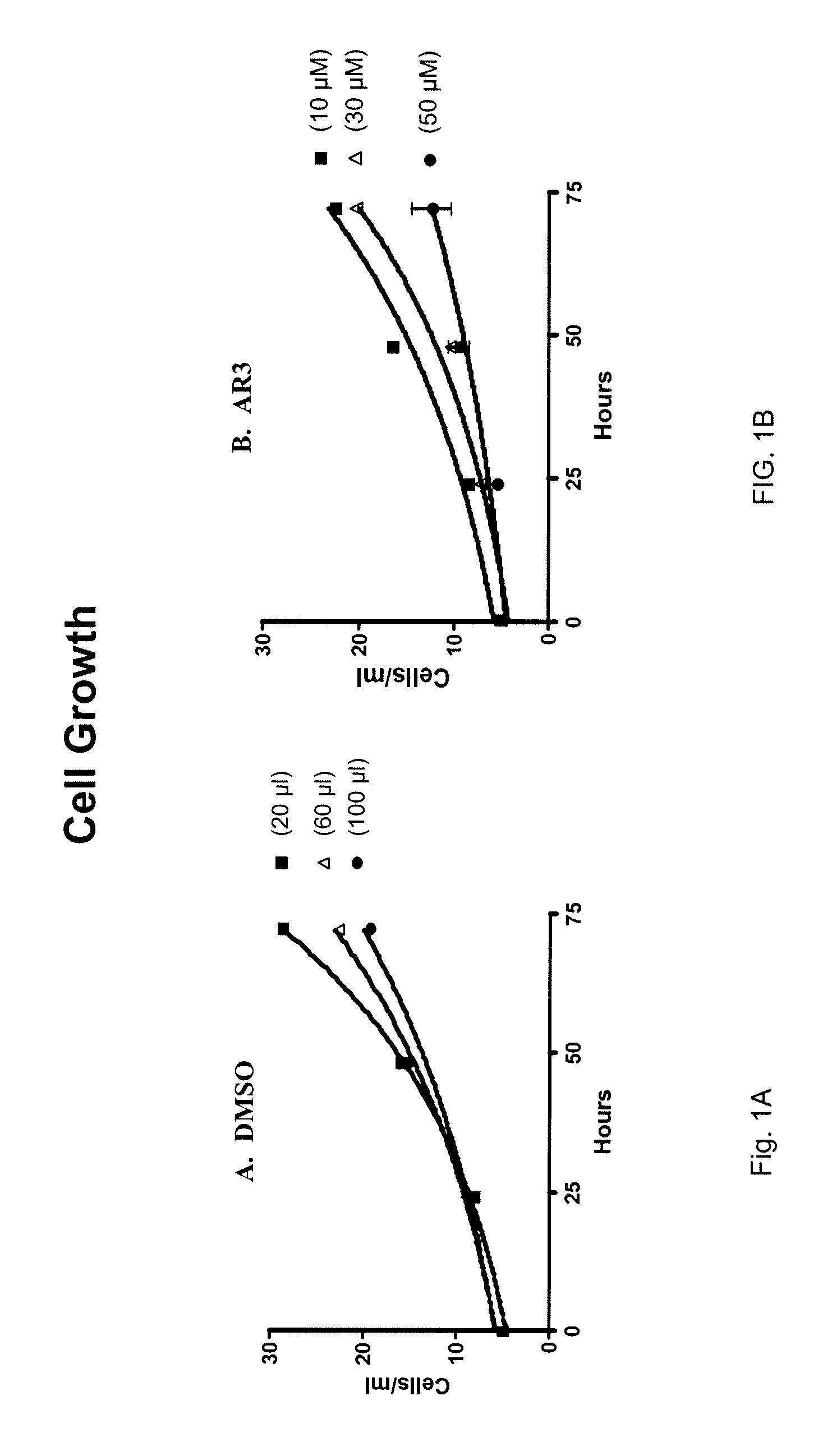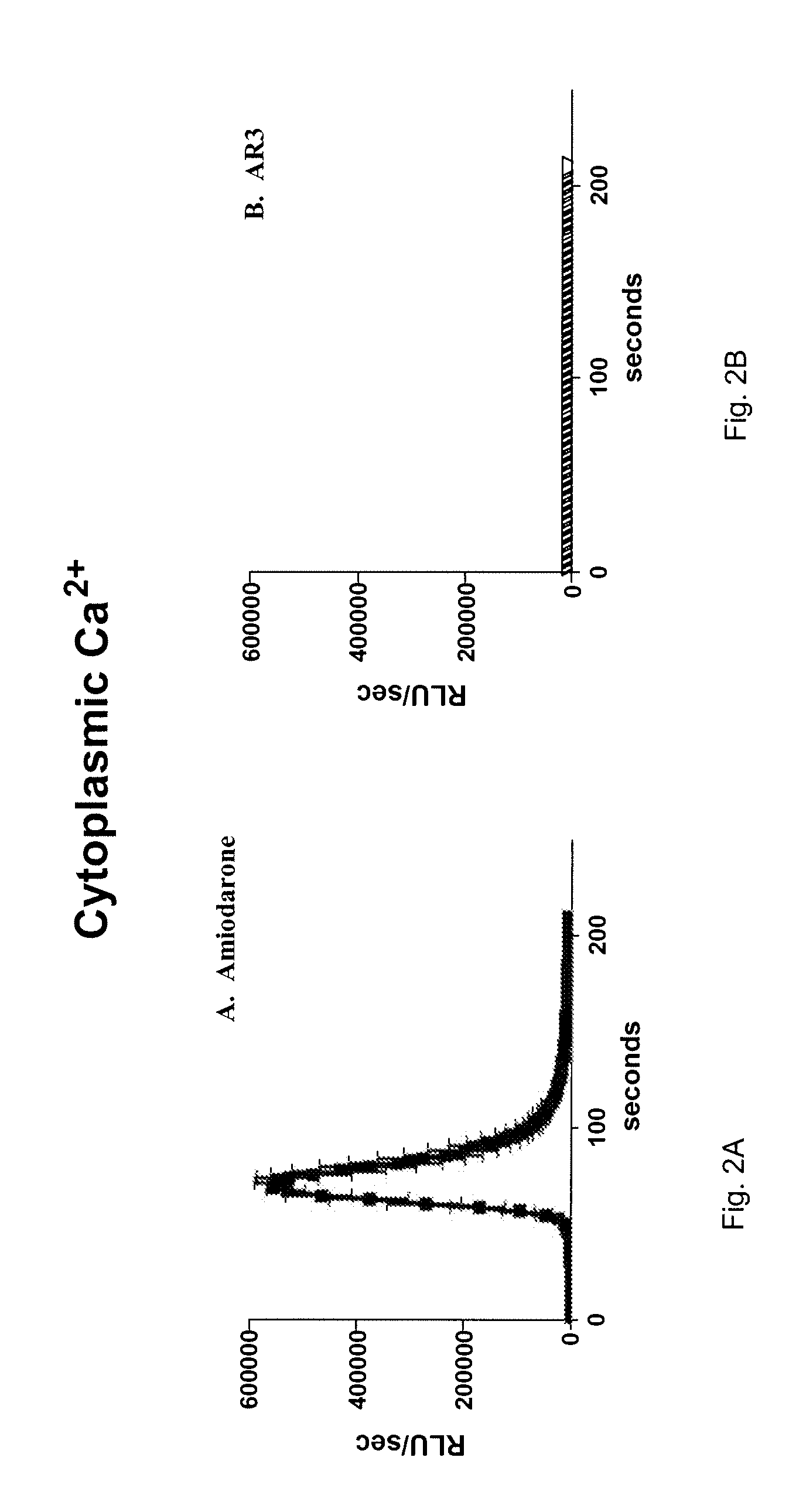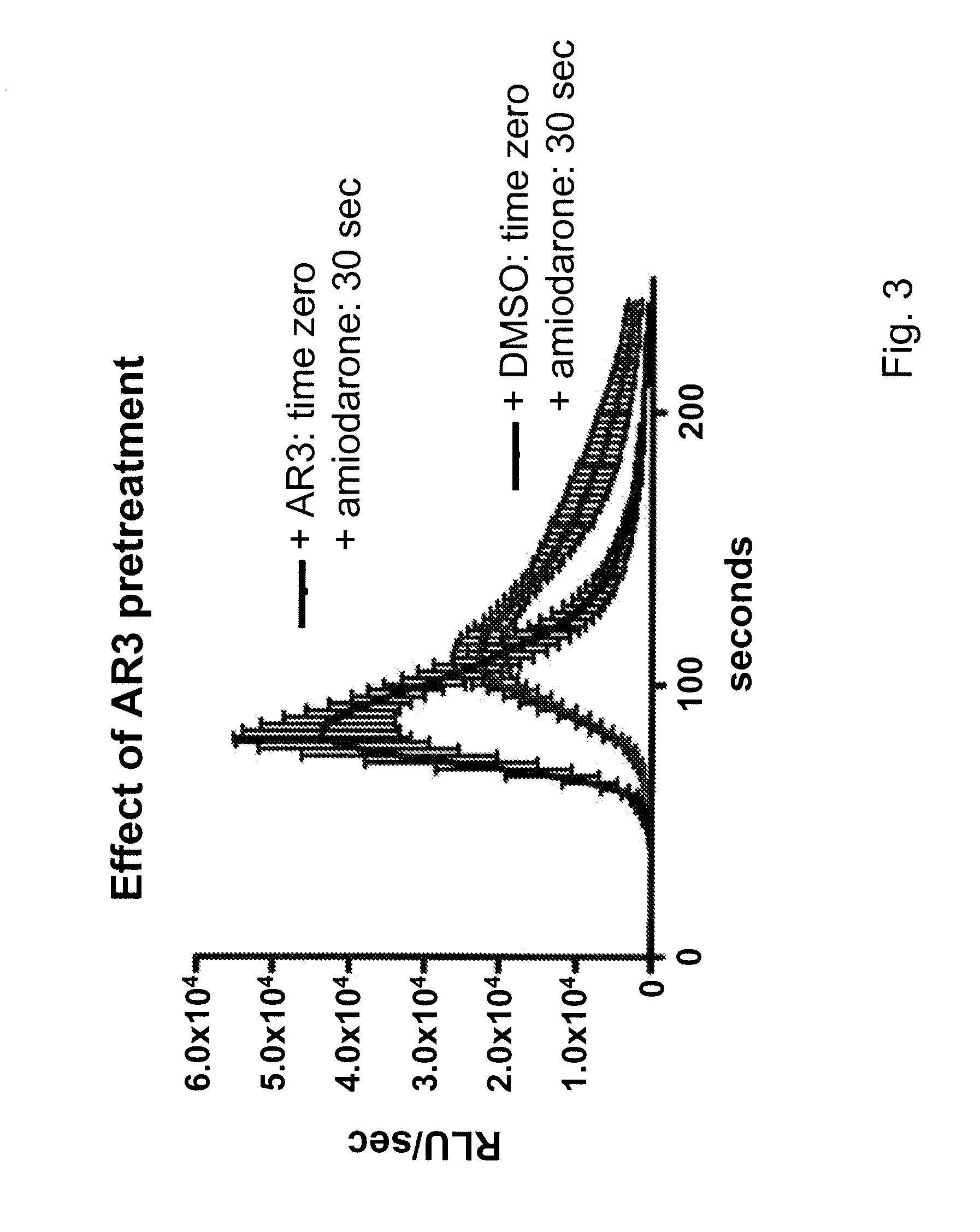Antifungal compounds
a technology of antifungal compounds and compounds, applied in the field of methods of treating fungal infections, can solve the problems of cryptococcosis incidence decline, limited treatment options, and dramatic rise of fungal infections, and achieve the effect of preventing or reducing infestation
- Summary
- Abstract
- Description
- Claims
- Application Information
AI Technical Summary
Benefits of technology
Problems solved by technology
Method used
Image
Examples
example 1
Materials and Methods
Strains, Media, and Reagents
[0114]The Cryptococcus neoformans strain used was JEC21 (MATα). The Aspergillus fumigatus strain used was AF293. Cells were grown in SD (0.17% w / v Difco yeast nitrogen base without amino acids and ammonium sulfate, 0.4% w / v ammonium sulfate, 2% w / v glucose). Agar media contained 2% w / v Bacto-agar. Adenine (12 mg / L final concentration), uridine (40 mg / L), leucine (30 mg / L), histidine (20 mg / L), and tryptophan (20 mg / L) were added to supplement auxotrophies as needed.
Growth Rates and Viability.
[0115]For quantitation of Cryptococcus cell proliferation, cells were grown in 5 ml of liquid medium in Klett test tubes with vigorous shaking in a water bath. Measurement of cell density was done in a Klett-Summerson colorimeter. Cells were grown overnight in the medium to be tested. Dilutions of the overnight cultures were made into a series of test tubes containing fresh medium and various concentrations of drug or DMSO. The cell densities were...
example 2
In Vitro Antifungal Activity of AR3
[0119]Various benzofuran derivatives were screened for antifungal effect by testing their ability to inhibit the growth of C. neoformans. Table 1 shows the generation times of C. neoformans strain JEC21 growing in minimal media in the presence of one of these benzofuran derivatives called AR3 (Compound B) or in the presence of only the carrier (DMSO) as a control. When AR3 was added at 20 μM, yeast cell growth arrested immediately. The viability of the growth arrested cells was tested by the Live / Dead Lumofungin assay and the analog-treated cells were found to be dead (data not shown). JEC21 cells treated with 10 μM and 5 μM AR3 had generation times 200% and 15% slower than controls. Thus, AR3 exerts a strong inhibitory effect on the growth of C. neoformans, requiring about a 2 fold higher concentration than amiodarone.
TABLE 1Effect of AR3 on Generation Time of Cryptococcus neoformans120 μM10 μM5 μMDMSO188.9 (12.5)182 910.2)185.7 (14.1)AR3No growth...
example 3
Effects on Mammalian Cells In Vitro
[0120]Since it is desirable to identify antifungal agents having reduced toxicity toward mammalian cells the effect of AR3 on the growth of the human cell line K-562 was assessed.
[0121]K-562 cells were grown in Iscove's modified Dulbecco's medium in culture flasks kept at 37° C. Cells were treated with AR3, amiodarone, or the carrier, DMSO, as a control. The growth of the cells was followed over a 3 day period. Control cells increased in density about 5 fold during this time (FIG. 1A). AR3 showed little toxicity to K-562 cells. Cells treated with both 10 μM and 30 μM AR3 increased more than 4 fold during the period of the experiment (FIG. 1B), similar to the growth of the control. When AR3 was added at 50 μM, cell growth was slowed slightly. AR3 treated cells had a 54.2 hours (standard error of 10.4) generation time compared to 34.0 (2.5) hours for control cells, a 60% increase.
[0122]Thus, AR3 shows no negative effects on growth of K-562 cells at c...
PUM
| Property | Measurement | Unit |
|---|---|---|
| concentrations | aaaaa | aaaaa |
| concentrations | aaaaa | aaaaa |
| concentration | aaaaa | aaaaa |
Abstract
Description
Claims
Application Information
 Login to View More
Login to View More - R&D
- Intellectual Property
- Life Sciences
- Materials
- Tech Scout
- Unparalleled Data Quality
- Higher Quality Content
- 60% Fewer Hallucinations
Browse by: Latest US Patents, China's latest patents, Technical Efficacy Thesaurus, Application Domain, Technology Topic, Popular Technical Reports.
© 2025 PatSnap. All rights reserved.Legal|Privacy policy|Modern Slavery Act Transparency Statement|Sitemap|About US| Contact US: help@patsnap.com



